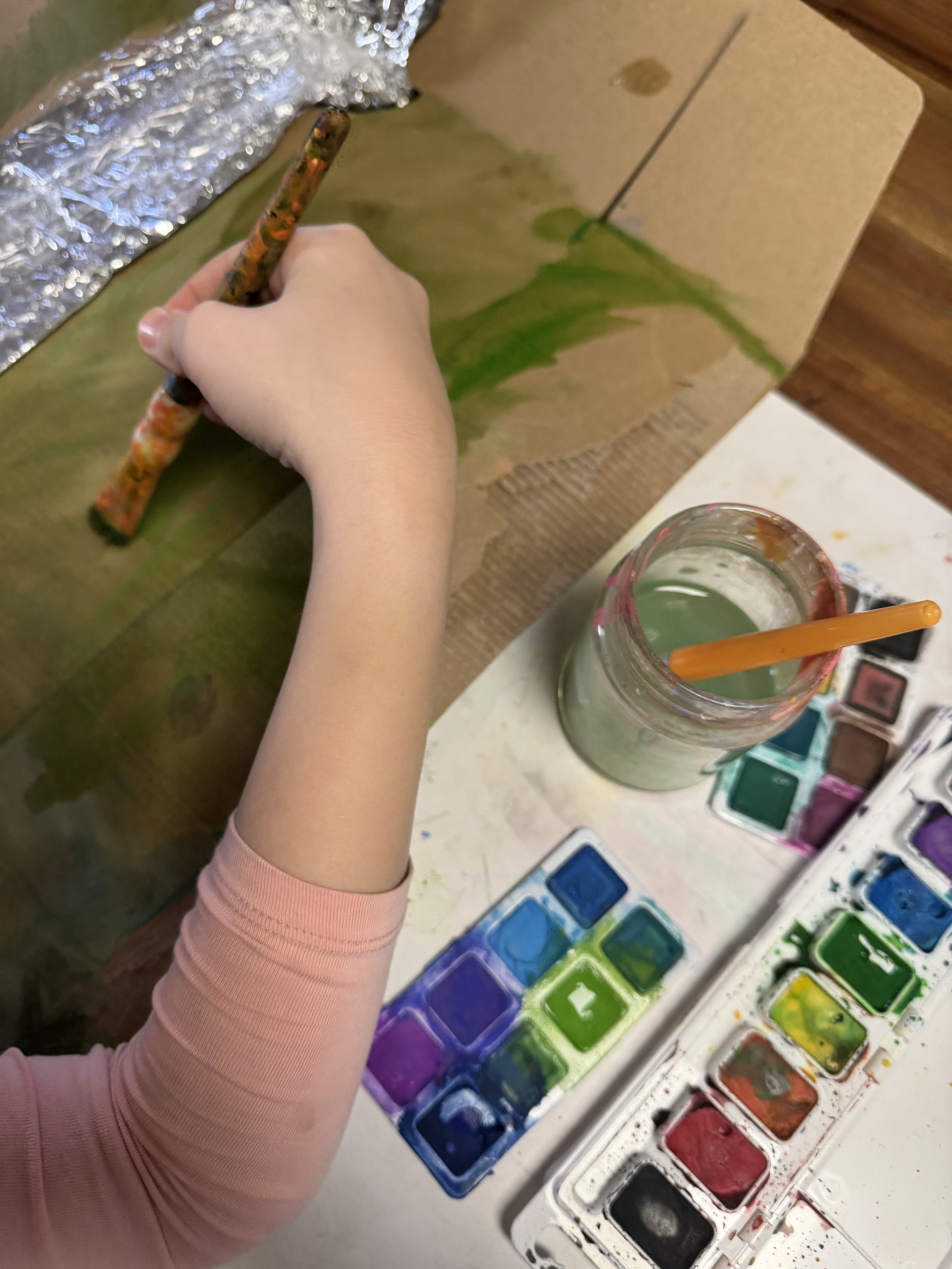Teaching Through Art
Awakening Wonder, Creativity, and Deep Learning
I am really a bit of an art nerd — and I love all beauty, in painting, writing, sculpting, movies, whatever artistic expression you can think of. But, for me, art is more than just a subject—it’s a way of seeing, exploring, and understanding the world. When I teach, I don’t just want my children to memorize facts; I want them to feel the knowledge, to experience it in a way that becomes a part of them. And art has this beautiful way of making learning come alive. Art has a way of reaching into the soul, stirring something deep and unspoken. It is color, movement, emotion, and story—all woven into one. When we bring art into learning, we invite children into a world where knowledge is not just memorized but felt, not just studied but experienced.
In the quiet strokes of a watercolor painting, the rhythmic carving of beeswax, or the swirling lines of a chalk drawing, something magical happens—learning comes alive. I incorporate art and artistic expression in every aspect of our homeschool that I can!
Why Art is an Essential Part of Learning
For centuries, art has been more than just decoration—it has been communication, expression, and understanding. When children engage in artistic learning, they are not just creating; they are absorbing, processing, and making meaning. More than anything, I use art to teach because I believe in the power of wonder. I want my children to see that knowledge isn’t just something written in books—it’s alive, swirling in the colors we mix, in the shapes we carve, and in the stories we bring to life. Art allows for mistakes and growth, for exploration and discovery. It invites us to slow down and savor the process, to see the beauty in learning itself.
🌿 Art Engages the Whole Child – When a child draws the life cycle of a butterfly instead of just reading about it, they feel the transformation. The colors, the form, the movement—it all becomes a part of them. Art naturally engages the head (thinking), heart (feeling), and hands (doing), which makes learning deep and lasting.
🌿 Art Brings Joy to Learning – There is an undeniable delight in dipping a brush into color, molding soft clay between fingers, or watching a story unfold in pictures. Art allows children to experience learning as something joyful, not just something to be "done."
🌿 Art Supports Emotional Growth – Through artistic expression, children learn to process emotions, build resilience, and develop confidence in their own voice. There is no "wrong" in art—only exploration, and this freedom fosters a sense of self-worth and discovery.
🌿 Art Encourages Creative Thinking and Problem-Solving – Whether a child is blending colors, sculpting a form, or illustrating a story, they are constantly making choices, adjusting, and exploring. This flexibility of mind is a crucial skill not only in academics but in life.
🌿 Art Creates a Multi-Sensory Learning Experience – Studies show that children remember and understand concepts better when they are engaged with multiple senses. Imagine learning history through illuminated storytelling drawings or grasping math through intricate geometric patterns—these artistic experiences make learning come to life.
Art in Everyday Teaching: Simple and Powerful Ways to Weave it In
The beauty of teaching through art is that it does not have to be elaborate—it simply requires intention. Some of the most meaningful artistic experiences are simple, sensory, and connected to the lesson.
✨ Watercolor Stories – Let history, literature, and nature stories unfold through wet-on-wet watercolor painting, allowing children to feel the mood and energy of a story.
✨ Main Lesson Books – Encourage children to illustrate their learning with drawings, diagrams, and hand-lettered titles in beautiful lesson books, making their work personal and memorable.
✨ Handwork and Sculpture – Carving, knitting, clay modeling, and even simple paper folding engage the hands while anchoring abstract concepts into real, tangible experiences.
✨ Movement and Form Drawing – Drawing simple shapes with fluid movement develops not only artistic skills but also hand-eye coordination, focus, and even early literacy and math understanding.
The Art of Learning is the Art of Living
When we teach with art, we are doing more than just making learning beautiful—we are helping children connect deeply with the world, awakening a lifelong love of discovery and creativity.
Through art, knowledge becomes personal, meaningful, and alive. And when we nurture this in childhood, we are giving children a gift they will carry forever—a way of seeing, feeling, and understanding that turns learning into something truly magical.
